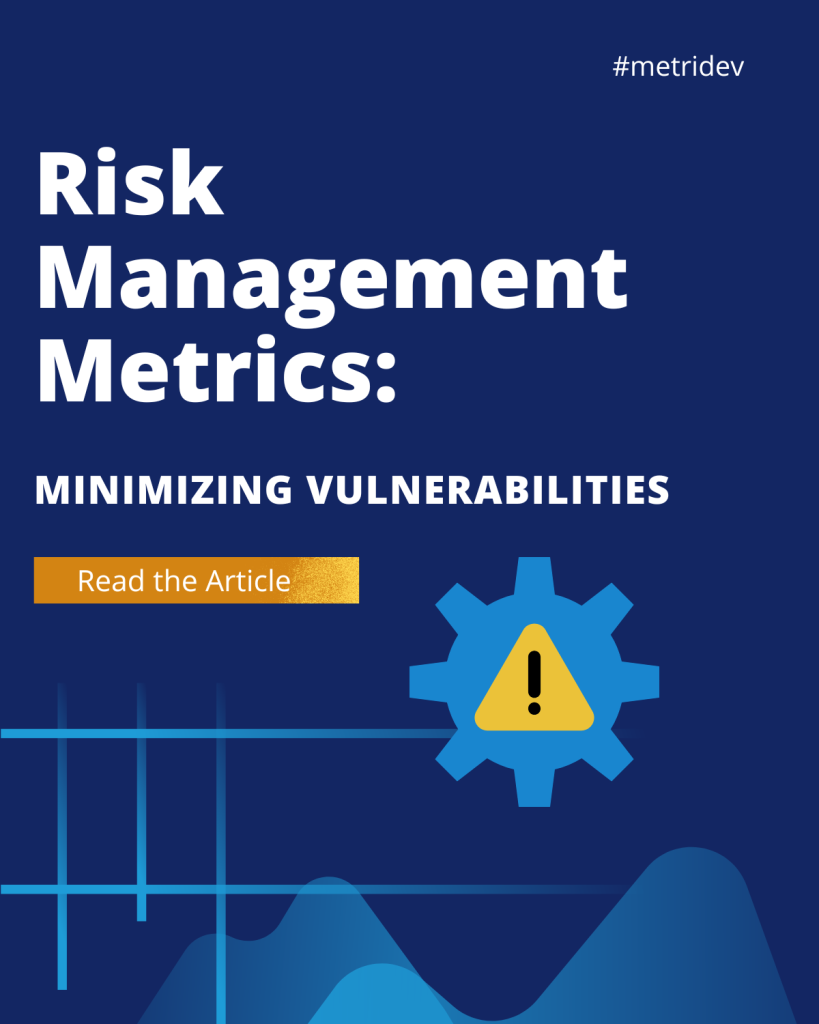Introduction
In the dynamic world of software development and deployment, the success of a DevOps strategy hinges on the ability to measure and track key performance indicators. DevOps performance metrics serve as the backbone for optimizing efficiency, driving continuous improvement, and aligning teams to achieve desired business outcomes. By adopting a data-driven approach, organizations can make informed decisions, identify bottlenecks, and foster a culture of accountability and transparency.
What are metrics in DevOps?
DevOps metrics are quantifiable measurements that provide insights into the overall health, efficiency, and effectiveness of the DevOps process. These metrics encompass various aspects of the software development and delivery lifecycle, including but not limited to:
- Infrastructure Performance: Measures related to the stability, scalability, and reliability of the underlying infrastructure.
- Application Performance: Indicators that assess the performance, availability, and responsiveness of the deployed applications.
- Deployment Frequency: Metrics that track the speed and consistency of software releases.
- Mean Time to Recovery (MTTR): Measures the time it takes to restore services and resolve incidents.
- Change Failure Rate: Indicators that assess the success and reliability of changes introduced into the system.
- Customer Satisfaction: Metrics that gauge the end-user experience and overall satisfaction with the delivered software.
Why are DevOps performance metrics important?
DevOps performance metrics play a crucial role in driving organizational success and optimizing the software development and delivery process. Moreover, by leveraging these metrics, organizations can achieve several key objectives. Firstly, they can enhance efficiency by identifying bottlenecks, streamlining workflows, and optimizing resource utilization to improve the overall efficiency of the DevOps pipeline. Additionally, improving collaboration is vital. Aligning teams, fostering transparency, and promoting a shared understanding of goals and objectives lead to better collaboration and cross-functional coordination. Furthermore, organizations can accelerate delivery by measuring and tracking the speed and consistency of software releases, enabling them to respond to market demands more quickly. Moreover, ensuring quality is essential. Monitoring the reliability and stability of deployed applications reduces the risk of incidents and improves the overall user experience. Lastly, driving continuous improvement is crucial. Analyzing performance trends, identifying areas for improvement, and implementing data-driven strategies help enhance the DevOps process continuously.
How to measure DevOps engineer performance?
Measuring the performance of DevOps engineers is crucial for ensuring the overall success of the DevOps initiative. By assessing the contributions and productivity of DevOps team members, organizations can:
- Identify Strengths and Weaknesses. Understand the individual strengths and areas for improvement for each DevOps engineer, enabling targeted training and development opportunities.
- Align with Business Objectives. Ensure that the efforts of DevOps engineers are directly contributing to the achievement of organizational goals and objectives.
- Foster Accountability. Establish clear performance expectations and metrics, promoting a culture of accountability and responsibility among DevOps team members.
- Recognize and Reward. Identify high-performing DevOps engineers and provide appropriate recognition and rewards, fostering a positive and motivating work environment.
Key performance indicators for DevOps engineers
To measure the performance of DevOps engineers, organizations can consider several key performance indicators (KPIs). Firstly, tracking code commits provides insights into each DevOps engineer’s productivity and contribution to the codebase. Additionally, incident response time measures their problem-solving abilities and overall responsiveness. Moreover, evaluating the deployment success rate reflects their technical expertise and attention to quality. Furthermore, assessing the ability to implement and maintain robust continuous integration and deployment (CI/CD) pipelines demonstrates their proficiency. Moreover, measuring collaboration and communication skills indicates their ability to contribute to a positive team dynamic. Lastly, evaluating proficiency in leveraging automation tools and technologies showcases their ability to streamline processes and enhance efficiency.

Characteristics of performance metrics in DevOps
Effective DevOps performance metrics share the following characteristics:
- Aligned with Business Objectives. The metrics should be directly linked to the organization’s strategic goals and objectives, ensuring that the DevOps team’s efforts are aligned with the overall business priorities.
- Actionable and Measurable. The metrics should provide clear and actionable insights that can be used to drive decision-making and implement targeted improvements.
- Balanced and Comprehensive. The metrics should cover a range of aspects, including infrastructure, application, deployment, and customer satisfaction, to provide a holistic view of the DevOps performance.
- Automated and Continuous. The metrics should be collected and analyzed in an automated and continuous manner, enabling real-time monitoring and rapid response to changes.
- Transparent and Accessible. The performance metrics should be transparent and accessible to all stakeholders, fostering a culture of accountability and collaboration.
Measuring infrastructure performance
Monitoring the performance of the underlying infrastructure is crucial for ensuring the stability and scalability of the DevOps environment. Additionally, key infrastructure performance metrics to consider include server utilization. It measures the CPU, memory, and storage utilization of the servers, providing insights into resource allocation and potential bottlenecks. Furthermore, tracking network throughput enables the identification of network-related issues and optimization opportunities by monitoring incoming and outgoing network traffic. Moreover, measuring uptime and availability ensures reliable service delivery by assessing the overall uptime and availability of the infrastructure. Lastly, evaluating incident response time reflects the efficiency of the incident management process by assessing the time taken to detect, diagnose, and resolve infrastructure-related incidents.
Monitoring application performance
Assessing the performance of the deployed applications is essential for delivering a seamless user experience and maintaining the overall health of the DevOps environment. Key application performance metrics to consider include:
- Response Time. Measures the time it takes for the application to respond to user requests, providing insights into the application’s responsiveness.
- Error Rate. Tracks the number of errors or exceptions encountered by the application, indicating potential areas for improvement.
- User Experience. Evaluates the end-user satisfaction with the application, capturing metrics such as user engagement, task completion rates, and customer satisfaction scores.
- Application Availability. Measures the overall uptime and availability of the application, ensuring reliable service delivery.
- Tracking deployment frequency. Monitoring the frequency and consistency of software deployments is crucial for accelerating the delivery of new features and enhancements. Key deployment frequency metrics to consider include:
- Release Cadence. Tracks the time between successive software releases, providing insights into the overall deployment speed and delivery pipeline efficiency.
- Deployment Success Rate. Measures the success rate of software deployments, indicating the reliability and stability of the deployment process.
- Deployment Rollback Rate. Evaluates the frequency of deployment rollbacks, which can identify issues with the deployment process or the quality of the released software.
Analyzing mean time to recovery (MTTR)
Measuring the mean time to recovery (MTTR) is essential for ensuring the resilience and reliability of the DevOps environment. Key MTTR metrics to consider include:
- Incident Detection Time. Measures the time taken to detect and identify an incident, reflecting the effectiveness of the monitoring and alerting systems.
- Incident Diagnosis Time. Evaluates the time required to diagnose and understand the root cause of an incident, indicating the technical expertise and problem-solving capabilities of the DevOps team.
- Incident Resolution Time. Tracks the time taken to resolve and restore normal operations, providing insights into the efficiency of the incident management process.
Evaluating change failure rate
Monitoring the change failure rate is crucial for maintaining the stability and reliability of the DevOps environment. Key change failure rate metrics to consider include:
- Change Success Rate. Measures the percentage of successful changes introduced into the system, indicating the overall quality and reliability of the change management process.
- Change Rollback Rate. Evaluates the frequency of changes that require rollbacks, identifying potential issues with the change implementation or testing processes.
- Change Lead Time. Tracks the time between the initiation of a change and its successful deployment, providing insights into the efficiency of the change management workflow.
Assessing customer satisfaction metrics
Measuring customer satisfaction is essential for ensuring that the DevOps process is delivering value to the end-users. Key customer satisfaction metrics to consider include:
Net Promoter Score (NPS): Measures the likelihood of customers to recommend the product or service to others, providing a high-level indicator of customer satisfaction. Customer Satisfaction (CSAT) Score: Evaluates the customer’s level of satisfaction with the product or service, capturing their overall experience. Customer Effort Score (CES): Assesses the effort required by customers to achieve their desired outcome, indicating the ease of use and overall user experience.
Implementing a performance metrics framework
To effectively measure and track DevOps performance, organizations should implement a comprehensive performance metrics framework. Firstly, establishing clear and measurable objectives that align with the organization’s strategic goals and DevOps initiatives is essential. Additionally, identifying the most relevant and impactful metrics that will provide insights into the performance of the DevOps process is crucial. Moreover, implementing automated data collection mechanisms to gather the necessary performance data in a consistent and reliable manner ensures data accuracy and efficiency. Furthermore, developing intuitive dashboards and reports that present the performance metrics in a visually appealing and easily understandable format facilitates effective decision-making. Continuously monitoring the performance metrics, analyzing trends, and identifying opportunities for improvement is vital for ongoing optimization. Lastly, fostering a culture of feedback and collaboration, where the performance metrics are shared and discussed among cross-functional teams, promotes transparency and alignment towards common goals.
Best practices for tracking DevOps performance metrics
To ensure the effective implementation and utilization of DevOps performance metrics, organizations should consider several best practices. Firstly, aligning metrics with business objectives is essential. Ensuring that the selected metrics are directly linked to the organization’s strategic goals and priorities enables data-driven decision-making. Additionally, establishing baseline performance levels and setting realistic targets for each metric provides a clear benchmark for measuring progress and success. Moreover, leveraging tools and technologies to automate the data collection process reduces manual effort and ensures the reliability and consistency of the data. Furthermore, presenting the performance metrics in a clear and visually appealing manner facilitates understanding and interpretation for stakeholders. Encouraging a culture of data-driven decision-making fosters continuous improvement, where the performance metrics are regularly reviewed and utilized. Lastly, regularly reviewing the performance metrics, identifying areas for improvement, and making necessary adjustments to the metrics framework ensure its ongoing relevance and effectiveness.
Challenges and potential pitfalls in measuring DevOps performance
While the implementation of DevOps performance metrics can bring significant benefits, organizations may also face certain challenges and potential pitfalls. Firstly, the sheer volume and variety of performance data can lead to complexity and information overload, making it difficult to identify the most relevant and impactful metrics. Additionally, ensuring that the performance metrics are aligned with the organization’s strategic goals and that all stakeholders are on board with the metrics framework can be a significant challenge. Moreover, disparate tools and systems can result in siloed performance data, making it challenging to obtain a holistic view of the DevOps process.
Furthermore, determining the direct impact of specific DevOps practices on overall business outcomes can be complex, requiring a deep understanding of the underlying relationships. Additionally, organizational culture and resistance to change can hinder the adoption and effective implementation of a performance metrics framework. Lastly, careful consideration should be given to the ethical implications of performance metrics, particularly in terms of employee privacy, fairness, and the potential for unintended consequences.
Conclusion: Driving efficiency and success with DevOps performance metrics
In the rapidly evolving world of software development and delivery, the effective measurement and tracking of DevOps performance metrics are crucial for organizational success. By aligning these metrics with strategic business objectives, organizations can enhance efficiency, improve collaboration, accelerate delivery, ensure quality, and drive continuous improvement.
Through the implementation of a comprehensive performance metrics framework, DevOps teams can gain valuable insights, identify areas for optimization, and make data-driven decisions that ultimately lead to increased productivity, reduced costs, and enhanced customer satisfaction. By embracing the power of DevOps performance metrics, organizations can unlock the full potential of their DevOps initiatives and position themselves for long-term success in the digital landscape.
Read our article Project Engineering Management: Key Strategies for Success and develop a customized performance management strategy to drive efficiency and success.









Leave a Reply